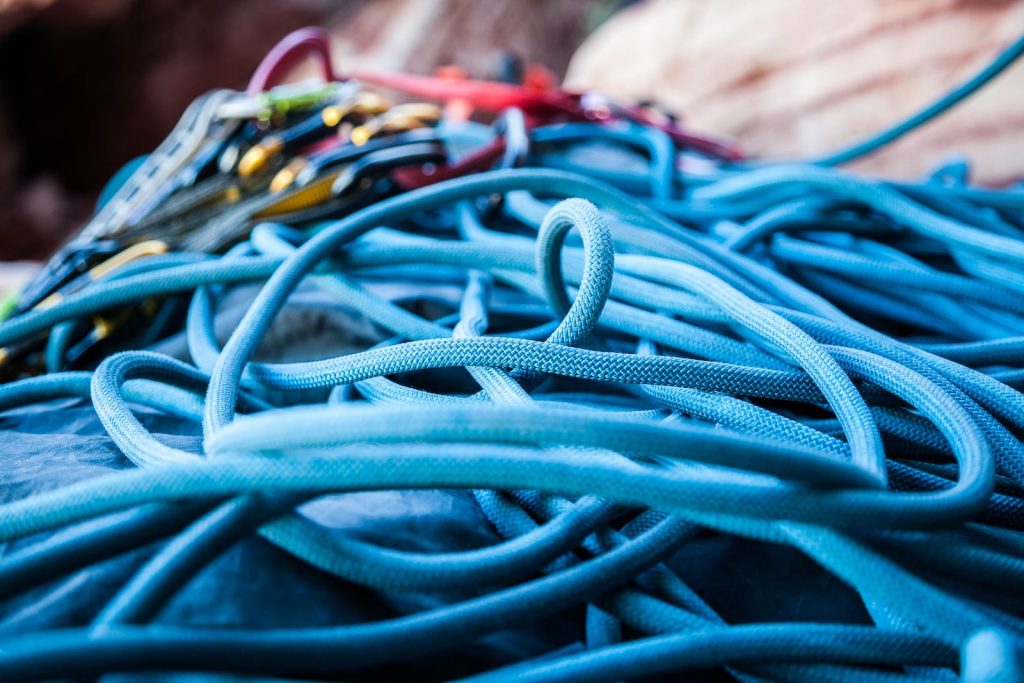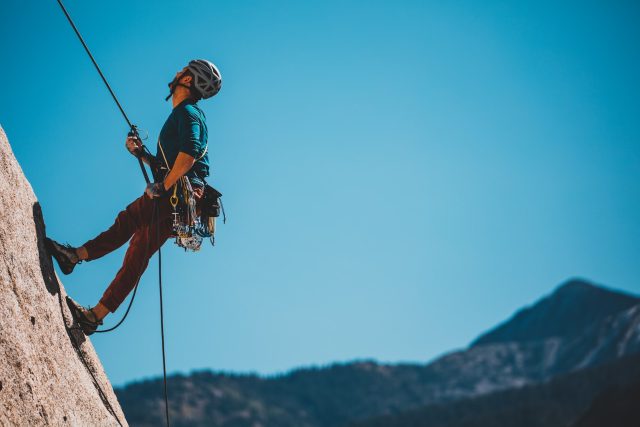Rock climbing is not just a sport but a way of life. It’s a thrilling and exhilarating experience that challenges both the body and the mind. Whether you are an adrenaline junkie or a fitness enthusiast, rock climbing offers a unique opportunity to test your limits, push yourself to new heights, and explore some of the most beautiful landscapes in the world. But starting rock climbing can be intimidating, and many beginners find it difficult to know where to begin. In this blog, we will explore the basics of rock climbing, including the equipment you need, the different types of climbing, and the safety tips you should know before hitting the rocks. We will also discuss the mental and physical benefits of climbing and how it can help you develop strength, balance, and confidence both on and off the rocks. So, if you are ready to take the adventure to new heights, let’s get started and discover the thrill of rock climbing!
Preparing for Your First Climb
Preparing for your first climb can be both exciting and intimidating. But with some preparation and knowledge, you can make the experience safe and enjoyable. Here are some tips on how to prepare for your first climb:
- Get in shape: Rock climbing is a physically demanding sport that requires strength, endurance, and flexibility. You don’t have to be a professional athlete, but starting a training program that includes cardio and strength exercises to prepare your body for the climb is a good idea.
- Learn the basics: Before hitting the rocks, learn the basics of climbing, including the different types of climbing, the equipment you need, and the safety techniques. You can take a beginner’s course at a climbing gym or hire a guide for your first climb.
- Gear up: Ensure you have all the necessary gear, including a helmet, climbing shoes, harnesses, ropes, and other safety equipment. Bringing a first aid kit, water, and snacks is also a good idea.
- Choose the right climb: For your first climb, choose a route that matches your skill level and experience. Don’t attempt a difficult climb that you’re not ready for. Instead, start with an easy climb and work your way up as you gain experience and confidence.
- Climbing with a partner: Climbing with a partner can make the experience safer and more enjoyable. Make sure you communicate effectively with your partner and follow proper safety protocols.
- Mental preparation: Climbing requires not only physical but also mental strength. Prepare yourself mentally by staying focused and calm and by visualizing the climb before starting.
By following these tips, you can prepare yourself for a safe and enjoyable first climb. Remember, climbing is a challenging and rewarding sport that requires practice and patience. Be patient, stay safe, and have fun!
Understanding the Basics of Climbing
Climbing is a unique and challenging sport requiring physical and mental strength. Whether you’re a beginner or an experienced climber, it’s important to understand the basics of climbing before you hit the rocks. Here are some essential elements to keep in mind:
- Types of Climbing: There are several types of climbing, including sport climbing, trad climbing, bouldering, and free soloing. Each type has its own set of techniques and equipment. It’s essential to understand the type of climbing you’ll be doing before you start.
- Equipment: Climbing equipment varies depending on the type of climbing you’re doing, but some essential items include a helmet, harness, ropes, carabiners, and climbing shoes. It’s important to invest in high-quality equipment that meets safety standards.
- Techniques: Climbing requires a specific set of techniques, including footwork, hand placement, balance, and body positioning. Practicing these techniques will help you become a more efficient and effective climber.
- Safety: Safety should be a top priority when climbing. Proper safety protocols, such as using a rope, wearing a helmet, and checking your equipment before climbing, are essential to reduce the risk of injury or accidents.
- Communication: Effective communication is crucial when climbing. Whether you’re climbing with a partner or in a group, clear and concise communication can prevent accidents and help ensure a successful climb.
- Physical and Mental Training: Climbing is a physically and mentally demanding sport that requires strength, endurance, and focus. It’s important to train both your body and mind to prepare for climbing challenges.
Understanding these basics of climbing will help you develop the skills and knowledge necessary to become a successful climber. Remember always to prioritize safety, practice regularly, and have fun exploring the amazing world of climbing.
Finding a Place to Climb
Finding a place to climb can be daunting, especially if you’re new to the sport. However, with a little bit of research and knowledge, you can find the perfect climbing spot that meets your needs and skill level. Here are some tips on how to find a place to climb:
- Climbing Gyms: Climbing gyms are a great place to start if you’re new to climbing. They offer a variety of climbing walls and routes, as well as equipment rentals and professional instruction. Most climbing gyms also have experienced climbers who can offer advice and tips to beginners.
- Outdoor Climbing Areas: Outdoor climbing areas offer a unique and exhilarating experience. Research online or ask other climbers for recommendations on popular outdoor climbing areas in your region. Check if the area requires a permit, and follow all safety guidelines and regulations.
- Guide Services: If you’re new to climbing, hiring a guide service can be great. They offer instruction, equipment, and guidance to ensure a safe and successful climb. Guide services also have extensive knowledge of the best climbing spots in the area.
- Climbing Communities: Joining a climbing community or club can help you connect with other climbers and gain access to insider knowledge on the best climbing spots. These communities can also offer support and encouragement to new climbers.
- Social Media: Social media platforms like Instagram and Facebook can be great resources for finding climbing spots. Follow climbing accounts and hashtags to discover new locations and connect with other climbers in the community.
Finding a place to climb can be a fun and exciting process. Always prioritize safety and choose a location that matches your skill level and experience. With these tips, you can find the perfect climbing spot and start exploring the amazing climbing world.
Staying Safe While Climbing

Climbing can be a thrilling and rewarding sport, but it also comes with inherent risks. It’s essential to prioritize safety when climbing to reduce the risk of injury or accidents. Here are some tips on how to stay safe while climbing:
- Use Proper Gear: Proper gear is essential to staying safe while climbing. Invest in high-quality gear that meets safety standards, including helmets, harnesses, ropes, carabiners, and climbing shoes.
- Check Your Equipment: Before every climb, check your equipment for any damage or wear and tear. Replace any damaged gear and ensure everything is secured correctly and in working order.
- Use a Spotter: If you’re bouldering, use a spotter to help protect you in case of a fall. A spotter can help guide you down and prevent injuries from a hard landing.
- Climb with a Partner: Climbing with a partner can help keep you safe in case of an accident or injury. Make sure you communicate effectively with your partner and follow proper safety protocols.
- Follow Safety Protocols: Always follow proper safety protocols when climbing, including using a rope, wearing a helmet, and checking your equipment before climbing. Familiarize yourself with proper belaying techniques, and never climb above your skill level.
- Know Your Limits: Knowing your limits is essential to staying safe while climbing. Don’t attempt a climb that is too difficult for your skill level, and listen to your body if you start feeling fatigued or in pain.
- Be Prepared for Emergencies: Always bring a first aid kit, water, and snacks with you when climbing. Be prepared for emergencies by knowing the location of the nearest hospital or emergency services.
By prioritizing safety and following these tips, you can reduce the risks of climbing and enjoy a safe and rewarding experience. Remember always to stay alert, communicate effectively, and have fun exploring the world of climbing.
Overcoming Fears and Anxiety
Overcoming fears and anxiety is a common challenge for many climbers, whether you’re a beginner or an experienced climber. Climbing can be a daunting experience, and it’s normal to feel nervous or anxious when you’re facing a new challenge. Here are some tips on how to overcome fears and anxiety while climbing:
- Practice Mindfulness: Mindfulness is a powerful tool for reducing anxiety and fear. Focus on your breathing, and stay present at the moment. This can help you calm your nerves and stay focused on the task at hand.
- Visualize Success: A visualization is a powerful tool for overcoming fear and anxiety. Visualize yourself successfully completing the climb, and imagine the feeling of accomplishment and pride that comes with it.
- Start Small: If you’re new to climbing, start with smaller climbs to build up your confidence and skills. Gradually increase the difficulty level as you gain experience and confidence.
- Take Breaks: Take a break if you’re feeling overwhelmed or anxious. Step back, breathe deeply, and focus on relaxing your body and mind.
- Talk to Others: Talk to other climbers who have faced similar fears and challenges. They can offer advice, support, and encouragement.
- Get Professional Instruction: Getting professional instruction from a certified climbing instructor can help you build your skills and confidence. An instructor can also provide guidance on how to stay safe and overcome fear and anxiety while climbing.
- Challenge Negative Thoughts: Recognize negative thoughts and challenge them with positive affirmations. Tell yourself you can do it, and focus on your strengths and accomplishments.
Remember, fear and anxiety are normal emotions, and it’s important to acknowledge and address them. With practice and patience, you can overcome your fears and anxieties and enjoy the thrill and satisfaction of climbing.
Conclusion: Reaching New Heights
Climbing is a sport that offers a unique and exciting way to challenge yourself physically and mentally. Whether you’re a beginner or an experienced climber, the journey to reaching new heights requires perseverance, dedication, and a commitment to safety. By understanding the basics of climbing, finding the right place to climb, preparing for your climb, staying safe, and overcoming fears and anxieties, you can enjoy the many rewards that climbing has to offer. These include the exhilaration of reaching the top of a climb, the satisfaction of mastering new skills, and the joy of exploring the natural world in a unique and exciting way. So, take on the challenge, stay safe, and reach new heights!






























